#It's funny I actually had a completely different design for Lefty
Text

I haven't posted them here before but man I have.. no consistent design for this guy-
Anyways you ever think about how messed up Lefty's entire like, everything is? Being made for the soul purpose of holding the puppet, shocking them to keep them inside? Basically a walking prison? Cause I do <3
Alt un-shaded ver under the read more :)
Reblogs > Likes, Thank you! <3
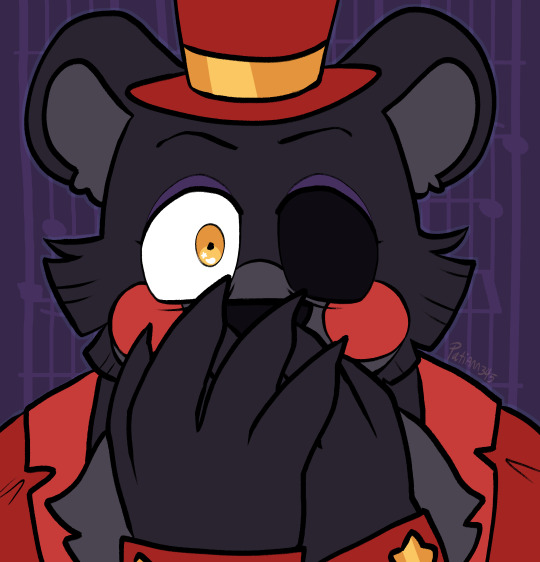
------------------------------------------------------------------------------
DNI if you support Sc*tt C*wth*n/are a Sc*tt C*wth*n apologist. Do not tag with "Thank you Sc*tt" or anything similar.
#Fnaf#Five nights at freddy's#Lefty#lefty fnaf#lefty the bear#LEFTE#five nights at freddy's pizza sim#pizza sim#fnafps#fnaf ps#god how else do I tag this?#rockstar lefty#??#I mean they ARE a rockstar animatronic so#That name works yeah?#digital art#my art#reblogs > likes#fnaf fanart#It's funny I actually had a completely different design for Lefty#That has a jacket#But then my brain said 'Ok but leather'#So um? Redesign ig??
33 notes
·
View notes
Text
Top 10 Greatest Johnny Depp Movies of All Time

1. Pirates of the Caribbean

Johnny Depp's character as Captain Jack Sparrow is probably the most famous of all. He nailed the role - the dark makeup, pirate attitude, rum lover, excellent gun and sword fighter, and a happy-go-lucky person. Isn't he the hottest pirate in movie history?
Fun facts:
Originally, he wanted Jack Sparrow to have no nose and be afraid of silly things like pepper and the common cold. However, Disney rejected his idea.He wore contact lenses which served as sunglasses so he wouldn't be squinting in the sun all the time.He also improvised Jack Sparrow's catch phrase, "Savvy?"Captain Jack is portrayed as having gold teeth in the film. The gold teeth were Depp's idea, but he predicted that executives would want fewer gold teeth, and told his dentist to implant more gold teeth as a bargaining tool. Sparrow's final number of gold teeth in the film was what Depp had envisioned all along.
2. Sweeney Todd: The Demon Barber of Fleet Street

It may be Captain Jack Sparrow who is our all-time favorite Johnny Depp character, but we couldn't deny the fact that he's a splendid killer in Sweeney Todd. In this movie, he's not just some Benjamin Barker who seeks revenge, but one who can sing while giving a nice shave. He really is a demon barber!
Fun facts:
There are some scenes in the movie where Sweeney opens his razor very quickly. It is actually a mechanical razor. There is already a button that he would press to have the razor open, which he hides with his finger. He personally requested the prop department to design this razor for him, as he had difficulty handling the real razors.In preparation for his role, he had recorded demo tapes of himself in West Hollywood, working with old friend and music producer Bruce Witkin to shape his own vocals without a voice coach. He also practiced singing the musical while filming Pirates of the Caribbean: At World's End (2007).The extra-large jacket costume he worn in the movie is a Belstaff dark leather trench, designed exclusively for him.
3. Edward Scissorhands
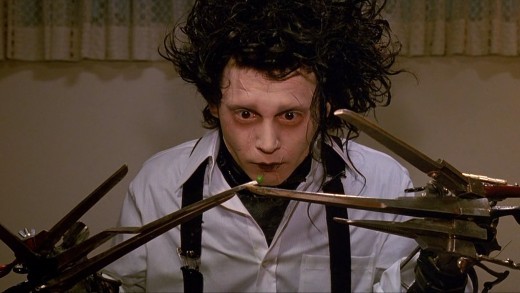
Johnny Depp's character as Edward Scissorhands is just a proof that he's not always the cool or bad guy. He can also be a sweet, innocent gentleman who's not hard to love. We all want to give Ed a cuddle, right?
Fun facts:
Johnny Depp admitted that he "cried like a baby" when he first read the script.He convinced Winona Ryder to appear in this film, so she dropped out of The Godfather: Part III (1990).This is fascinating: Edward says only 169 words in the film.This film is the first collaboration between Tim Burton and Johnny Depp.
4. Sleepy Hollow

Fun facts:
According to history, Ichabod Crane was a very unattractive man. Johnny Depp offered to add prosthetics to his face to make himself look ugly, but Tim Burton wanted to base the character on Crane's more unattractive personality traits - more on his reported squeamishness and eccentricity.
He initially found the idea of Christina Ricci being his love interest in the film to be rather odd, seeing as he's known her since she was nine years old.
5. Charlie and the Chocolate Factory
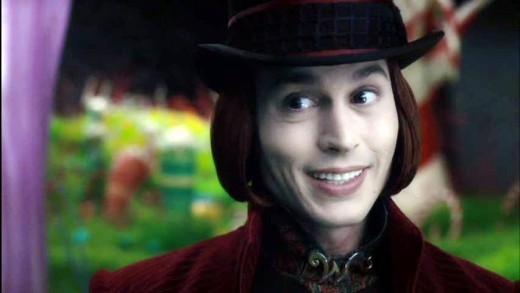
The sweet world of Charlie and the Chocolate Factory is one of our childhood movies. Johnny Depp's Willy Wonka looks funny and vibrant, which is just visually appealing for children. Rolling Stone magazine wrote, Depp goes deeper to find the bruises on Wonka's secret heart than what Gene Wilder did.
Fun facts:
Johnny Depp was the only actor Director Burton considered for the role. signed on the role without reading the script under the intention of going with a completely different approach than what Gene Wilder did in the 1971 film adaptation.Depp and Burton derived Willy Wonka's character from children's television show hosts.As a child, Johnny Depp was allergic to chocolate. Quite ironic, right?This is Depp's second chocolate-based movie.
6. Finding Neverland
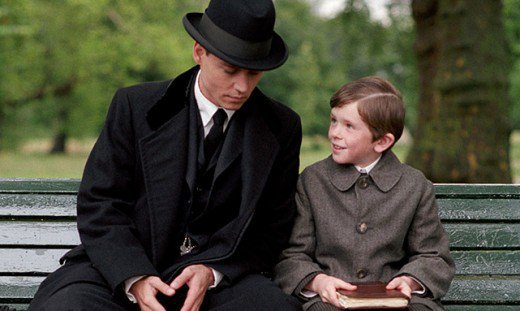
Finding Neverland is a movie which shows that Johnny Depp can play a protagonist's role in a fantasy world without wearing colorful makeup. His role as J.M. Barrie, though understated, was a promising one. He brought just the right amount of grace and charm to the real-life story.
Fun facts: Directly after filming those scenes, Johnny Depp told the director that they would end up deleting those scenes. Guess what, he's right!
Johnny Depp was the first of the cast members to sign on to the film. Kate Winslet was next.
During the formal dinner scene, Johnny Depp played a prank by placing a "fart machine" under Julie Christie's chair. He had a remote control that he used to trigger a fart sound from the device. The children are laughing so hard at that than from playing with the spoons.
7. What's Eating Gilbert Grape

This is the kind of movie that shows how versatile Johnny Depp is. His role as Gilbert Grape is just so enchanting, it would make you feel emotional right away. In addition to his performance, young Leonardo DiCaprio is also astonishing. Variety magazine told that, "Depp manages to command center screen with a greatly affable, appealing characterization."
Fun facts:
Johnny Depp felt really bad about having to insult Darlene Cates' character, "Momma", and would often apologize to her after shooting. Depp said to Cates, "Man, I want you to know how much I hated having to say those things about you, or about your character."He also had the idea of playing Gilbert Grape as someone who seems constantly half asleep/half awake--someone numb to the peculiarities in his life. Juliette Lewis completely agreed with his interpretation of the character. Even still, he's worried he was boring by playing Gilbert so mildly. Lasse Hallström, however, agreed with Lewis, and thought that Depp nailed the part. In an interview, Depp said, "It was a hard time for me, that film, for some reason. He was always talking about these video games, you know? I told you it was kind of a dark period... 'No, I will not give you a drag of my cigarette while you hide from your mother again, Leo.'" Depp concluded, "I'd say the absolute truth is that I respect Leo a lot. He worked really hard on that film and spent a lot of time researching. He came to set and he was ready to work hard and all his ducks were in a row."
8. Donnie Brasco

This rich,satisfying movie is adapted from Joseph Pistone's novel about his own experiences as an undercover FBI mole. Depp himself played Pistone and his alter-ego, the titular Donnie Brasco. Critics praised his performance especially: a Salon.com review hailed his performance as "sensational." New York Magazine called him "graceful" and found his acting highly believable: "We can believe that the mob might take him for a tough, ambitious young hood—he has the wariness and the self-confidence that creates an aura."
Fun facts:
In preparation for his role, Johnny Depp met with Joseph D. Pistone in person for a number of times. He also took shooting lessons from the FBI.He spent months together with the real Joseph D. Pistone before shooting. Most of the time they lifted weights together.One of the many reasons why Johnny Depp was chosen to cast as Brasco was because he looked kind of Italian. In reality, he says he's "One part Cherokee and the rest mutt."Al Pacino was originally going to play Brasco. However, when he switched to Lefty, he recommended Johnny Depp.
9. Ed Wood
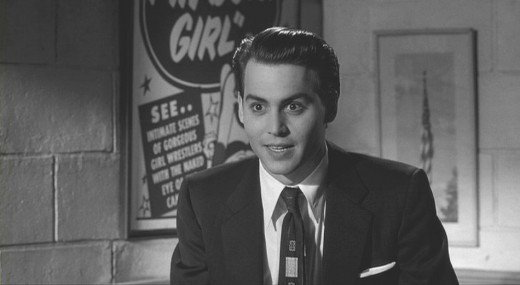
Another film directed by Tim Burton, the 1994 biopic stars Depp as cult filmmaker Ed Wood. It may not be as popular as some of the other Burton-Depp collaborations, but this movie proved that Depp is more than capable of handling different roles, even without all the flashy makeup and costumes. Though it is not a box-office hit, it earned several praises from other critics and audiences alike, and earned Depp a Golden Globe nomination.
Fun facts:
Johnny Depp has said that his characterization of Edward D. Wood Jr. was a mixture of "the blind optimism of Ronald Reagan, the enthusiasm of the Tin Man from The Wizard of Oz (1939) and Casey Kasem."Ed Wood's Hollywood home overlooking his nightclub "The Viper Room" was previously owned by Bela Lugosi.This is Tim Burton's first R rated film.
10. Alice in Wonderland
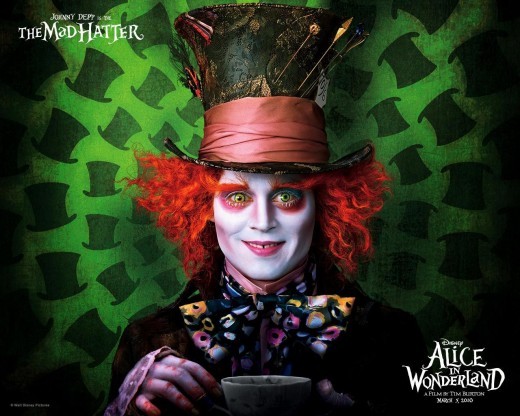
Another colorful role by Johnny Depp is being the Mad Hatter in the 2010 Alice in Wonderland movie. Mia Wasikowska, the actor for Alice, said that, "both (Alice and Mad Hatter) feel like outsiders and feel alone in their separate worlds, and have a special bond and friendship." Burton also explained that Depp "tried to find a grounding to the character ... as opposed to just being mad."
Fun facts:
This film marks the 7th time Johnny Depp has worked under the direction of Tim Burton.Johnny Depp admitted that he found the process of filming on a green screen "exhausting", and "befuddled by the end of the day". He also said that he prefers "an obstacle" while in filming.Tim Burton and Johnny Depp worked hard to give the Mad Hatter more depth and presence than in past portrayals. In fact, the pair swapped sketches and themes for the character prior to creating this new version.Johnny Depp watched the Scottish comedy show Rab C. Nesbitt (1988) to perfect his character's Glaswegian voice.
Read the full article
0 notes
Text
CS:20 (almost)
I wrote about this game many times.
2000-2019. I joined with Beta7.
Prologue
I have been playing Counter-Strike for basically twenty years. I still play a match of two from time to time, against bots on CS:CZ because my machine can’t run CS:GO but whatever. Still watching pro games here and there. I spent a few years watching tons of pros play. Jumping off of my chair and stuff.
I’m struck at how the excitement of entering a large, dangerous area is still there, even with bots. Even after decades. Even after knowing absolutely everything about where to go, what to do. Because I’ll still get surprised and die stupidly or make the two best moves that allow me to place quick headshots. Crouch. Reload. Giggle (or not).
Only really great games carry excitement through emergent gameplay for that long. Many games do that for five years. Ten is a lot more rare. Twenty is quite exceptional. Only CS, Mario Kart and Go are there personally.
The Game
Counter-Strike is one of the best multiplayer game ever made. When it came out, I thought that we didn’t need any more multiplayer shooting games, or at the very least those with military things going on. Even though we got Call of Duty games every year since 2005, I still think CS should have been the end of that genre. From gameplay to matches’ length, it’s perfect.
Okay, Battlefield is fun too because it adds this entire new scope with vehicles and does it well. But to me it just makes gameplay more messy and clumsy for the thrill of doing silly things with your plane and your dune buggy. Nah. Essence, son.
When Counter-Strike came out the setting was actually refreshing, believe it or not. We didn’t have first-person games with current military stuff. At that time we had Half-Life, Tribes, Deus Ex, Quake, Unreal Tournament and other cyberpunk-ish ‘brosome aesthetics going on I guess.
CS was very different. CS was very subtle. CS afforded not very great players skill-wise to win games because they would play the clock, camp or bully you. It’s near impossible to win a 1 VS 2 or 1 VS 3. The first time you’re planting the bomb? Those few seconds where you’re absolutely vulnerable, while your teammates, hurt, are looking out for you, is one of the purest joy in computer games. Period.
CS is hilarious. As soon as you know the other team has no money to buy equipment, you know you have to be extra careful because them mofos will play dirty next round. Pettiness as gameplay. Nice.
I think that’s what made the game so viscerally human. The playing field was accessible where Quake or Unreal weren’t. I have many memories of always dying mid-match but satisfied because I knew I had HURT the team we were fighting and that I had had a big impact even though I was gone. That grenade and that submachine gun clip had done the job. The bomb was planted or about to. Mission completed (or close to).
But also, I think it’s the first and only game where sound –and the absence of sound- is a matter of winning or losing a game.
I can’t think of any game where it’s that absolutely crucial. It’s always about “I heard them”. Seeing the opponents means it’s too late. Pro games are so intensively quiet before the storm, it’s so unique and scary and exciting. Sound as game design. Dope.
The negative side of playing this game is well, teenagers. I was already grown when this game was being made, playing with brand new dads and young adults in a LAN setting. Being able to hear my friend I’d just eliminated shout “fuck!!” next door was good in many ways. “Come GET ME!” would yell my other friend next to me in the room, when he was the last player standing, with a shotgun –no range- in a tower. So many laughs.
Playing against 15 years old, weapon-lover, sugar-injecting kids online was different. Way different. Niggerrrrr different.
Gamedev
The story is of course, weird and dorky. Minh Le is Counter-Strike’s main designer and Jess Cliffe is the producer. They started the game, developed the game’s various designs, named it etc. Valve saw the potential very quickly and got involved in the first months of the beta.
One of the most important thing about Counter-Strike: the maps. They didn’t have much when they started and thanks to a few brilliant level designers, maps showed up and were almost immediately, perfect.
The interesting thing is that a handful of dudes created half a dozen maps that have been played for billions of hours. And most of those guys were Europeans, and not necessarily experts in level design! As often in this industry, they disappeared. Some worked on level design at Valve, some left, others quit level design all together…
Counter-Strike is very lucrative. Last time I checked, CS:GO –the last iteration, created in 2012- was bringing something like $200M a year and as I’m researching now and looking at numbers (Valve doesn’t disclose them), it appears that it’s probably closer to half a billion dollars a year? Yup. Lucrative.
The game is now F2P.
The two OG game designers worked there for years. One left, the other might have gotten fired over some catfishing scandal. It’s pretty disappointing to see. I’d love to read the full story of how the two designers met, what was the fire for them, what design decisions they fought for the most, which ones were the hardest to maintain, the different CS versions through engines etc. It’s probably super interesting. I want to know everything.
Left-Handedness
When I started playing the game, I felt uncomfortable with the weapon model stuck on the right side of the screen. Because Counter-Strike is a Half-Life mod and that you could switch models to the left side with that game engine, so could I in CS. And, that changed everything. It immediately felt natural and now I could focus on team work and actually aim properly. I just discovered that Minh Le is left-handed too and would switch its weapon model, just like me (which is why early screenshots of the game show lefty stuff).
The thing is that 20 years and hundreds of first person shooters later, CS is still the only game that allows real lefties to enjoy playing. It boggles my mind that an entire industry just can’t bother to accommodate left-handedness, pushing people away from enjoying games more. The software industry can be more rigid and conservative than a rock in Virginia while having all the latitude to change things: it’s just code. Sigh.
Criticism
I wish voice over wasn’t so skewed towards making the counter-terrorists speak English with no accent. It’s not about realism. Voice over was the same for both sides back in the day and it was just fine. It’s not a good design decision to play on that and make it “funny” for some people. There should only be a CT team and a T team and nothing else. Fuck your underlining pointless stories, it’s a multiplayer game. Honestly, they should even have gone with a paint ball theme, add some women models and go away from military settings. At least make a version like this, call it CS:SOFT I don’t care.
Enough military/police propaganda. Enough.
Anyway. Counter-Strike is still one of the most played/watched game on earth. And I kinda want to launch a game real quick now (I did; it was, as usual, fun).
from h. Play https://ift.tt/2Y7tNOm
via IFTTT
0 notes
Text
A Man’s Guide To Wearing Rings
http://fashion-trendin.com/a-mans-guide-to-wearing-rings/
A Man’s Guide To Wearing Rings
You don’t have to be into luxury watches to wear a watch. To be the kind of man who knows what ‘escapement’ means, or why Rolexes with faulty dials are more covetable than the pristine ones. That’s because even though watches are jewellery, they’re not really jewellery. They’re functional. You could use one to land a stricken plane. You could navigate through a jungle. You could even summon a rescue plane, if you ever find yourself stranded with Breitling’s Emergency on your wrist.
Whereas decorative jewellery gives a fella funny feelings. A man who’ll lay down his inheritance on a Patek Philippe will still balk at a necklace, or even worse, a ring. Buying something just for the way it looks is pure vanity. It’s something women do.
It’s also something Viking warriors, Egyptian kings and Tudor nobles did. That rappers still do. It wasn’t until the Victorians, and their priggish efforts to separate the sexes, that men eschewed jewellery. Sir Walter Raleigh wore a ruby-studded ring that would put Mr T to shame.
Fortunately, men are finally starting to see sense. “I initially started designing for the guy who just wore a watch,” says Michael Saiger, who founded men’s jewellery brand Miansai a decade ago, and who’s done more than most to normalise the idea that anyone can rock a ring. “I don’t think guys are nervous about rings that aren’t wedding rings; I more feel that some guys are hesitant about wearing jewellery in general because they have a hard time accessorising. Guys should be more open to taking risks and trying new things with their everyday style.”
It helps that designer brands have followed suit and now offer craft rings – often at accessible price points – that won’t make you look like a tangential member of the A$AP Mob. “They’re completely acceptable as a way to accessorise an outfit,” says Henry Graham, creative director at Wolf & Badger, a marketplace for independent retailers. That said, it’s easy to go overboard, so there are a few things to bear in mind before you weigh down your entire hand in precious metals.
But first…
Which Ring For Which Finger?
Where your ring ends up should be steered by taste, practicality and mechanics (just because a ring goes on, that’s no guarantee it’ll come back off as easily). “Tradition may state differently, but I believe you should wear any ring how you wish,” says Alice Walsh, director of accessories label Alice Made This. “Your ring, your hand, your choice.” But if you’re a stickler – or just need a steer – there are some connotations for different ring fingers.
Pinky
The first stop for guys who want to think beyond the wedding ring. Your pinky has a few advantages when you want to dip a (little) toe into men’s jewellery. First, it’s on a finger that’s essentially decorative, so it won’t get in the way of actually doing things with your hands. Second, it doesn’t have an underlying meaning; you wear a ring there because you want to, not because of tradition.
The Godfather popularised the idea that gangsters wear pinky rings, but unless you spend your nights at the docks, you’re probably safe from that misapprehension. More likely they’ll think you’re inspired by Prince Charles, who wears his signet ring on his left pinky – stacked on top of his wedding ring, as is royal tradition.
Ring Finger
The clue’s in the name. This is where the most common men’s ring goes – a wedding band. In the UK and US, you’ll most often find it on the left hand; in Eastern Europe and Orthodox traditions, it can appear on the left. As ever, go with whatever feels comfortable – if you’re a lefty, you might find it sits better on your right hand, where it’s less likely to get in the way of anything.
The ring finger’s been the home to wedding bands for centuries, supposedly based on the idea that it’s the only finger with an unbroken vein – the vena amoris – that leads directly to the heart. As romantic an idea as this is, it’s also cobblers – the veins in your hand are all basically the same.
Middle Finger
For rings, the middle finger tends to be the last port of call when the rest of your hand is full. It’s not left bare for traditional reasons, but rather because it’s so close to your index finger, which tends to be most active. That proximity means anything with any heft can feel awkward, but because your middle finger is the hand’s biggest, too dainty a ring looks odd. Which leaves you in no man’s land.
For those guys who do wear middle finger rings, they tend to appear on the opposite side to the wedding band. Again, that’s a practical thing – stack rings up on consecutive fingers and you’ll sound like a castanet player whenever you move your fingers.
Index Finger
Historically, the most prominent finger was home to the most prominent rings: a signet or family crest, worn by nobility and, in some cultures, banned as a ring location to anyone outside the aristocracy.
These days, you can put a ring on it even if you don’t have a family crest, but you’d still be wise to go big, since it’s a space that makes a statement. If you’ve got the cojones then chunky, three-dimensional rings look good on an index finger.
Thumb Ring
Think of the thumb as the index finger on steroids. For one, your thumb is big and so needs a big ring. There’s also the fact that thumb rings are less common, which means you’ve got a statement ring in a novel location.
But that all also means that, if you’re the kind of guy who leans into statement-making, a thumb ring is an easy way to stand out. To avoid looking like you own an ‘import-export’ business, keep the rest of your hand fairly clear; a pinky plus a thumb ring gives a decent amount of separation.
5 Style Tips For Wearing Rings style guide
1. Be Ambidextrous
Like any accessory, less is often more with rings. Overload your hands and the individual elements become tricky to discern. “You should balance your jewellery,” says Walsh. “If you have a wedding band and watch on one hand, then one or two rings would work nicely on the other hand, for example.”
David Yurman
2. Nail Your Scales
As with your clothes, fit matters. Tiny rings on pianist fingers can feel out of place, much as skinny jeans can look indecent on bodybuuilder thighs. “The scale of jewellery is important to bear in mind,” says Graham. “Don’t wear rings that are the wrong size for your body shape. A big ring can look good on a guy with large hands but uncomfortable if you have small fingers.”
Rachel Boston
3. Match Your Metals (Or Don’t)
Traditionally, clashing metals signified a lack of care – all your jewellery should be either gold, or silver, but never both. But in a world where you can wear joggers with a blazer, pairing a steel watch with a gold ring isn’t the faux pas it once was. Although it’s still best when you make it look deliberate.
“When done right it can add a more stylised aesthetic to the overall look,” says Saiger. It’s particularly effective when you mix your metals in a single piece; wear something like Miansai’s Fusion ring and you’ve got carte blanche to add more rings in either metal. “We were able to take 90 per cent silver and 10 per cent gold and use this process of mechanically bonding it together through a machine to achieve this look.” As well as your style, it’s also good for your pocket.
Holt Renfrew
4. Think About Your Lifestyle
Rappers can rock the dripping-in-bling look because they don’t have to wear suits to work. “If you do, then a giant, statement ring won’t work,” says Graham. “Look for something more subtle.” You can always leave the 3D stuff for the weekend, but if you want to make rings a signature, go for a simpler form of personality.
“Choose something that’s timeless, but nothing overly designed or intricate, unless it’s a piece you see yourself wearing everyday,” says Saiger. “Rings are something that I find people like to put on and never take off, so for this reason I would suggest going with something more understated.”
Smith Grey
5. Commit
Any style statement looks best when you own it. “When a man wears jewellery he doesn’t feel comfortable in, that shows,” says Saiger. Rings can feel odd at first, a physical weight that makes you more self-conscious. So try before you buy and only go for something you feel confident you can pull off. And if that means starting out with something that’s barely there, so be it. “Personally, I like my rings at two millimetres, which is the same as my wedding band,” says Saiger.
David Yurman
Three Go-To Ring Styles
Wedding Band
Though common today, until the Second World War, only wives wore wedding rings. This was less about romance, more the patriarchy; it proved her kids were legitimate and that she had a man to look after her. During the war they were forged for men from non-precious metals, as a reminder of who soldiers overseas were fighting for. But they didn’t catch on as jewellery until the 1960s.
This shift was fuelled half by the rise of European style – Italian men have never been as squeamish about jewellery – but also second-wave feminism, which tried to put both partners in a marriage on an equal footing. “A wedding ring tends to be a clean, simple band,” says Walsh. “It’s an expression of commitment.” Designs tend to be inward- rather than outward-facing: an engraving against the skin tends is always more personal than a giant jewel.
Signet Ring
The OG men’s ring, the signet was first worn by the Ancient Egyptians, who used them to stamp official documents. In Britain, they were engraved with a back-to-front family crest; when sealing a letter with wax, you’d deboss it with your signet to prove it actually came from you. They were traditionally family heirlooms and signified plush roots – you had to have a coat of arms to actually engrave on your signet – but by the 19th century, new money types could buy their own heraldry. The signet lost some of its cache.
These days, they’re still handed down within families, but also come with all manner of designs; Gianni Versace wore one bearing his label’s Medusa head. “They’ve usually got a flat face, to accommodate engraving,” says Walsh, and then to be chunkier and more eye-catching than a wedding band.
Fashion Rings
There are other rings that men wear for tradition, not aesthetics, but they’re rare. Which means most everything else is lumped in as ‘fashion’ – a ring you wear just because you like the look, not because tradition says you should. These can range from designer bling to something with a story that you picked up from a car boot sale. “It’s an expression of your character,” says Walsh. “You can wear them on any finger, alone or in multiples.”
That gives more leeway for esoteric choices. “Ask yourself whether it’s for a lifetime, or for a moment,” says Walsh. The answer, as with anything you wear, will inform how much to invest. “Take advice [on the style] if you like, but also go with your gut. If you instinctively like it, you’ll wear it well.”
0 notes
Text
Lefties, you should feel very special
New Post has been published on https://nexcraft.co/lefties-you-should-feel-very-special/
Lefties, you should feel very special
In graduate school, I earned beer money by modeling for life drawing classes in various art departments. (Don’t judge, grad school doesn’t pay well and beer isn’t free.) In the long hours standing around, I would survey the room and count how many of the aspiring artists were left-handed. Later in my career, I did the same thing—counting lefties, not standing around naked—in the biology classes I taught.
Funny thing: in any given class, around 10 percent of the students were lefties. It turns out this is true for all human populations, not only middle-America university classes. Globally, about 90 percent of people are righties. But why?
For as long as I can remember, I’ve been fascinated by handedness—our almost ubiquitous tendency to favor one hand over the other—and maybe a little envious of the rare left-handers. Their rareness gave a certain mystique—and they got to use those funky chair-desks with the desktop on the “wrong” side.
What do we know about the genetics of being right- or left-handed, or even ambidextrous? And how does this help shape our understanding of biology in general?
What is “handedness” anyway?
Given how fundamental, and obvious, handedness is, we know surprisingly little about its genetics.
One complication—determining handedness isn’t straightforward. The dominance of your writing (and drawing) hand is a function of at least three things: Genetics to be sure, but also the environment, and, likely, random chance.
Why the environment? Think of the probably-not-apocryphal stories of the Catholic school nuns ruler-rapping the knuckles of anyone so sinister to write with their left hand. (My father-in-law swears these stories are true.)
In many cultures, the left is associated with evil. There has been, and may continue to be, considerable pressure against maintaining the left hand as the dominant hand.
Less violently, but no less effectively, there is convenience. Try using a pair of right-handed scissors with your left hand.
That didn’t work, did it?
The fact that scissors, and other assorted manual tools and appliances, from dessert forks to chainsaws, are designed for the righty majority means they’re harder to use lefty, resulting in considerable pressure to conform and use your right hand.
What does “right-handed” really mean?
This pressure means that many studies that defined handedness by identifying the dominant hand in writing may have miscategorized a substantial portion of the population.
A solution adopted by many researchers is to assay a suite of behaviours. There are a surprising number of activities that show a dominant hand, including the decidedly adult behaviour that may have just crossed your mind, but also more demure pastimes like sewing or spoon use.
A twist, which becomes important when we look at the genetics, is that researchers can classify people into one of three groups—right- or left-handed or ambidextrous—or two groups—right-handed and not right-handed.
Genetics definitely plays a role, but what kind of role? Is the genetics of handedness deterministic, essentially a right/left switch, or is it more subtle?
Could there be a genetic makeup, or genotype, that predisposes you to be not-right-handed? Handedness, then, could be a function of this genotype, and its interaction with the environment and random chance.
Right/left asymmetry is actually common
Other left-right asymmetries abound in human biology. Perhaps the most striking is the asymmetrical layout of our internal organs—heart, lungs, and digestive track.
But it’s the clockwise or counterclockwise whorl of hair that has had a central role in understanding the genetics of handedness. Much like the rotation of hurricanes and cyclones, the hair on our scalps forms a central spiral with a direction of rotation. (I’m not making this up. Find a pair of mirrors, or the person sitting next to you, and check me on this—or look at this picture.)
The whorl, and its direction, was the focus of a seminal paper on the genetics of handedness. The scientist, Amar Klar, hung out in local malls and surreptitiously recorded the whorl direction of shoppers’ hair. Most had clockwise whorls. He didn’t record the shopper’s dominant hand—but he didn’t have to. Remember, the bias in handedness is almost universal.
Because 90 percent of the human population is right-handed, Klar concluded that right-handedness and a clockwise whorl were correlated. He then directly surveyed a smaller group of people who had a counterclockwise whorl and found that this group split 50/50 between right-handed and not-right-handed.
In this way, Klar showed that handedness and whorl direction are associated, but not in a “all righties are clockwise; all lefties are counterclockwise” way.
A single gene for handedness?
Klar proposed an elegant alternative model that still only requires a single gene to determine both whorl direction and handedness.
Many genes have different forms, called alleles. We each carry two copies of every gene in our genome, one from mom and the other from dad. In some cases, but not all, one of these alleles is “dominant.” (Remember Gregor Mendel and his wrinkled and smooth peas?)
In Klar’s model of hair and hands, the handedness gene has two alleles; if you have one or two copies of the dominant allele, you have a clockwise whorl and you’re a righty. But when you have two copies of the other form, chance comes into play—and that’s when things get interesting.
Klar’s interpretation is that these individuals always have the rare counterclockwise hair whorl and that they’re not right-handed about half the time. In other words, in these individuals, handedness is a genetic flip of the coin.
This kind of combination of genetics, the environment, and simple random chance underlies most human biology, from height or weight to drug resistance or cancer susceptibility. Understanding the genetics of human handedness can, then, help us to understand human genetics in general.
Other species?
What about asymmetry and handedness in other species?
Like many “complex” behaviours (think language or tool use), we used to think of handedness as a uniquely human trait. Once we actually started looking, however, we’ve found “handedness” in many other species, from snails to kangaroos, even to our ancient evolutionary ancestors.
Snails don’t have a dominant hand (or any hands, really), but their shells twist either right (almost all the time) or left (very rarely).
Cephalopods, octopus, cuttlefish and squid are a group of molluscs (like snails) that do have arms and, it turns out, are “handed.” When I briefly studied cephalopod behaviour in the 1980s, we didn’t think that octopus or cuttlefish could distinguish left from right, but more recent work shows that they can and that they have a preferred arm or side.
Scale-eating cichlids, a sort of creepy fish that feeds exclusively on the scales of other, less fortunate, fish, preferentially attack from the left or from the right.
Your cat reaches for food with its dominant paw, but your leg-lifting dog is ambidextrous in its peeing preference.
Let’s experiment
A central challenge in exploring the genetics of handedness in humans is our (completely justified) unwillingness to experiment on humans. I won’t genetically engineer my daughter to see if I can make her left-handed, but I’d be willing to try it on a snail.
Because handedness occurs in other species, we can study them to determine its genetic mechanism. This comparative approach underlies all model organisms; it is why, for example, we study the metabolism of fruit flies to understand the biology of deep underground mining and the genetics of chromosome cross-talk and cancer.
One important point to keep in mind, though, is that similar systems aren’t necessarily controlled by the same genes. Klar, for example, found that organ asymmetry is determined by a genetic pathway that is distinct from the one for hair whorl and handedness. Handedness in cats or snails is likely genetic, but the genetics may not be identical to that in humans.
Animal handedness differs from us in another way, too. The extreme bias present in humans, that 90:10 ratio, doesn’t exist. Cats, for example, are just as likely to be right-pawed or left-pawed. American lobsters have a larger “crusher” claw and a sharper “cutter” claw, but the big, dominant claw is equally likely to be on the right or left. Kangaroos tend to be lefties, and chimps tend to be righties, but in both the bias isn’t as strong as it is in humans.
Why the bias in humans? Handedness is biologically complex and involves substantial co-ordination between the brain and hand. The brain is itself asymmetrical, with the left and right hemispheres playing different roles in co-ordinating activities such as pattern recognition or language.
Interestingly, there seem to be subtle differences in the brain architecture of righties and lefties. Does the bias, then, reflect some kind of wiring in the brain? Some studies have tied left-handedness to changes in brain function and behaviour.
There are also some groups in which lefties are over-represented, including artists and architects. These numbers suggest that there is a creative benefit to being wired this way.
(The more observant, or pedantic, may be asking how this point fits with my initial observation that about 10 percent of art students were lefties. The answer is likely sample size. I stood around in front of a lot of students—but still only a couple hundred. This may simply have not been big enough sample for me to see the jump to 20 percent from 10 percent. Sampling limitations are the bane of biologists.)
Possible creative, or cognitive, differences bring us back to my initial fascination, and envy, of that sinister minority.
If you need someone to cut along the dotted line with the first pair of scissors that come to hand, perhaps then any righty will do. But if you need someone to think outside the box, you might want to enlist a lefty.
Thanks to Jack Bateman, Jeff Arnold, Kim Fahner, and Jean Boal for their invaluable suggestions and for pointing me to some of the literature and ideas that support this piece. Any limitations in interpreting that literature is mine alone.
Thomas Merritt is a Professor and Canada Research Chair, Chemistry and Biochemistry, Laurentian University. This article was originally featured on The Conversation.
Written By Thomas Merritt/The Conversation
0 notes